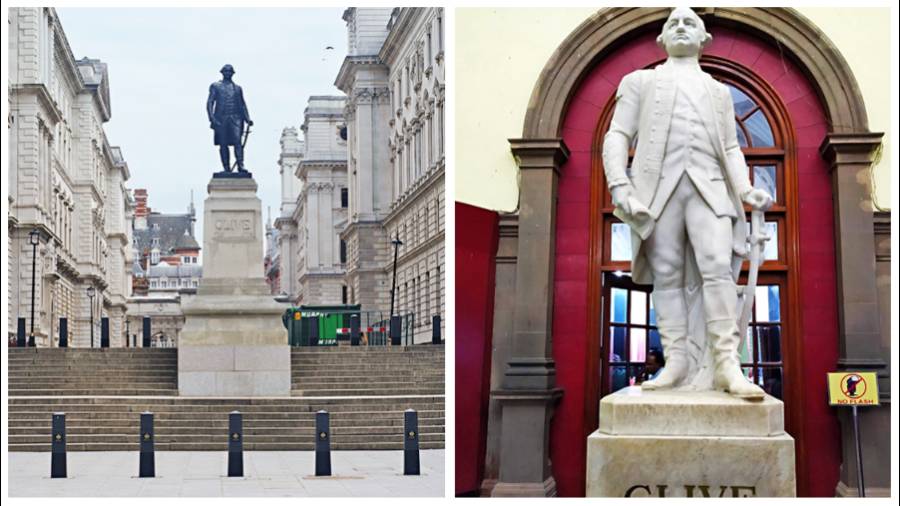Statues of Robert Clive in London and Kolkata can be linked together on online portals and given a context for future generations to have an idea of his role in laying the foundations of British Imperialism in India, said an art historian from the UK.
On public display, both statues have drawn ire and debate in the UK and Kolkata. While the bronze statue on the Clive Steps in London overlooking St James Park had to be barricaded and protected by police in the aftermath of the Black Lives Matter movement, the marble statue in Kolkata, on the lawns of Victoria Memorial Hall (VMH), has also been the subject of much debate of whether it should remain there in post-Independence India.
‘Clive of India’, venerated by the East India Company and regarded as the ‘hero of the Empire’ in the 18th and 19th centuries, was the first British Governor of the East India Company’s Bengal Presidency and responsible for establishing the foundation of the British Imperialist rule in India is riled for his “loot” of the country, of his role in perpetuating the Great Bengal Famine of 1770 which killed ten million people. It is said that he left the country with a vast personal fortune that he had amassed by robbing the people of Bengal and then leaving them to die.
Art historian Jennifer Howes, former curator of visual arts with the British Library, here for a talk on ‘Robert Clive in British Art’ in Victoria Memorial Hall recently, when asked if the statues should be removed from their present sites, said: “The removal of London's Clive statue looks extremely unlikely. Therefore other solutions need to be discussed. Like they should be recontextualised to give the public an idea of his role.”
Asked how the Clive statue, the work of sculptor John Tweed, can be contextualised in an open space at Whitehall, Howes said: “We could use the Google Art and Culture portal for linking the one in Kolkata and the one in London online and then provide information on Clive, maybe add the letter of contract that John Tweed signed for taking on the commission of making Clive’s statues and other documents and trivia on Clive that would throw light on his role.”
Howes added: “If statues are in a museum, one can re-contextualise them by having an exhibition around the statue, the history of why the sculpture was there which adds to the visitor’s knowledge about the statue. I am not talking of curatorial stuff and also not political stuff but about why and how the statue was made. VMH has used Google Art and Culture for other things, we could use it for linking the two Clive statues too.”
Incidentally, both the statues are the handiwork of the sculptor John Tweed who was commissioned by East India Company to make them. The bronze statue in London was installed in 1916 on Clive Steps and plaques commemorating his achievement are part of the base of the figure. Recently, in the aftermath of the Me Too and Black Lives Matter movements there was a ‘Remove Clive’ campaign on change.org.
One Ameya Tripathy started the petition to Westminster City Council. He said the Clive statue at Whitehall was glorifying a mass murderer and a looter in the heart of the nation’s capital that was insulting particularly to the south Asians.
The location of the statue at the entrance of the Foreign and Commonwealth Office (FCO) gives the impression to visitors that the British state today condones the murderous activities of the East India Company and that people should be taught about Clive’s legacy in museums and archives accompanied by fresh historical work, said the petition.
Thousands have signed the petition which was made right after slave trader Edward Colston’s sculpture was pulled down and dragged into a river in Bristol during a fiery Black Lives Matter anti-racist movement
